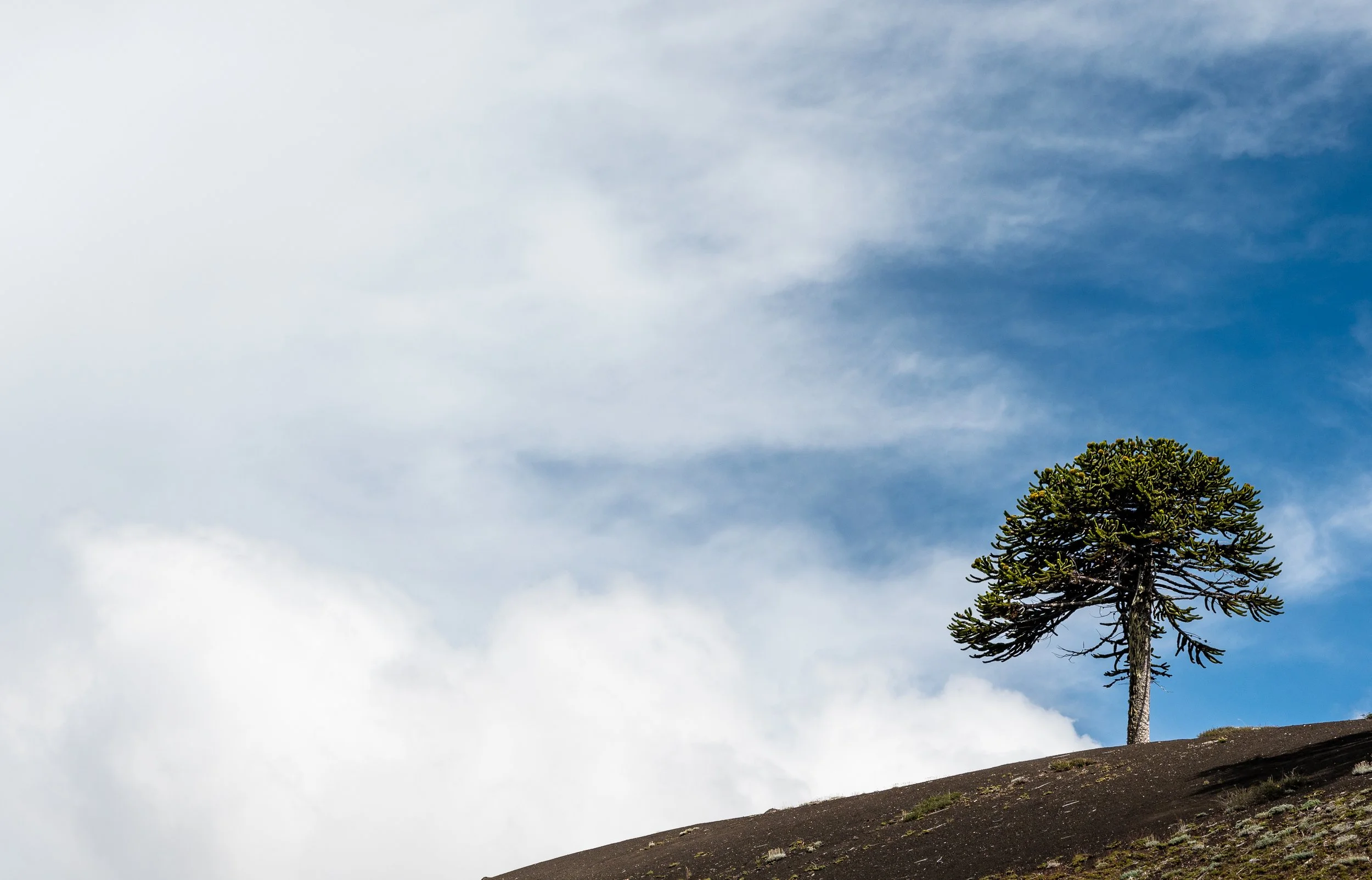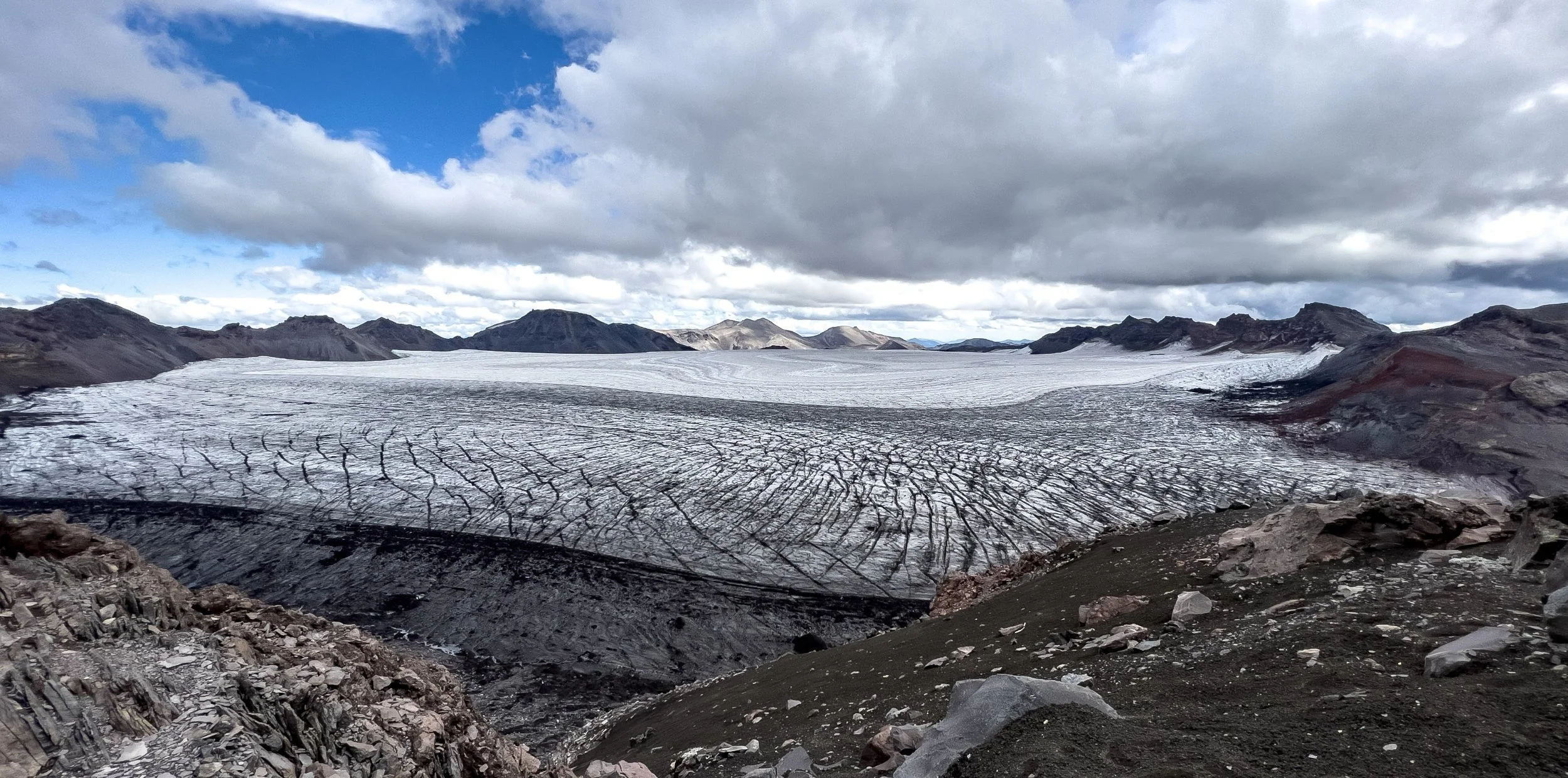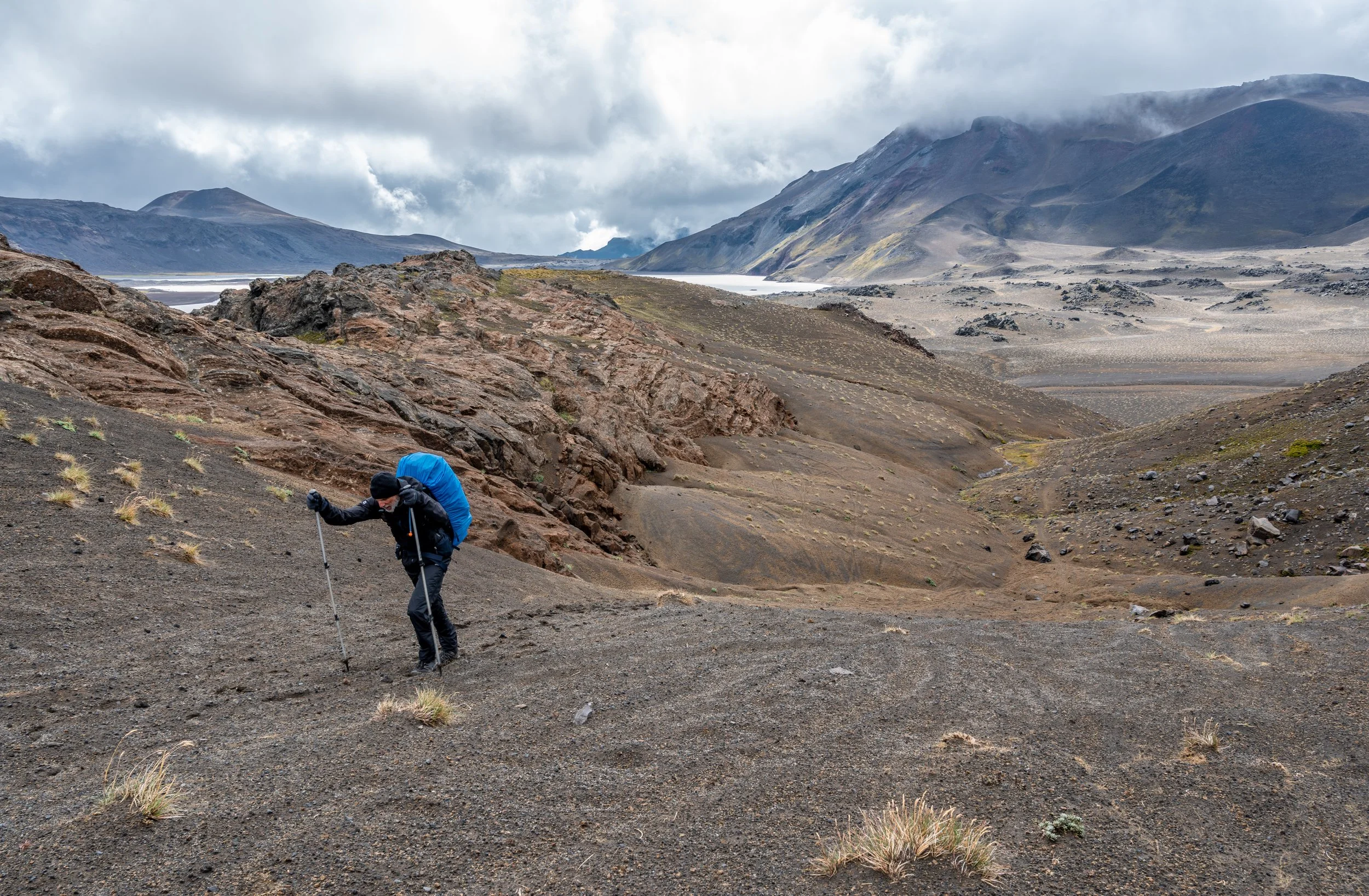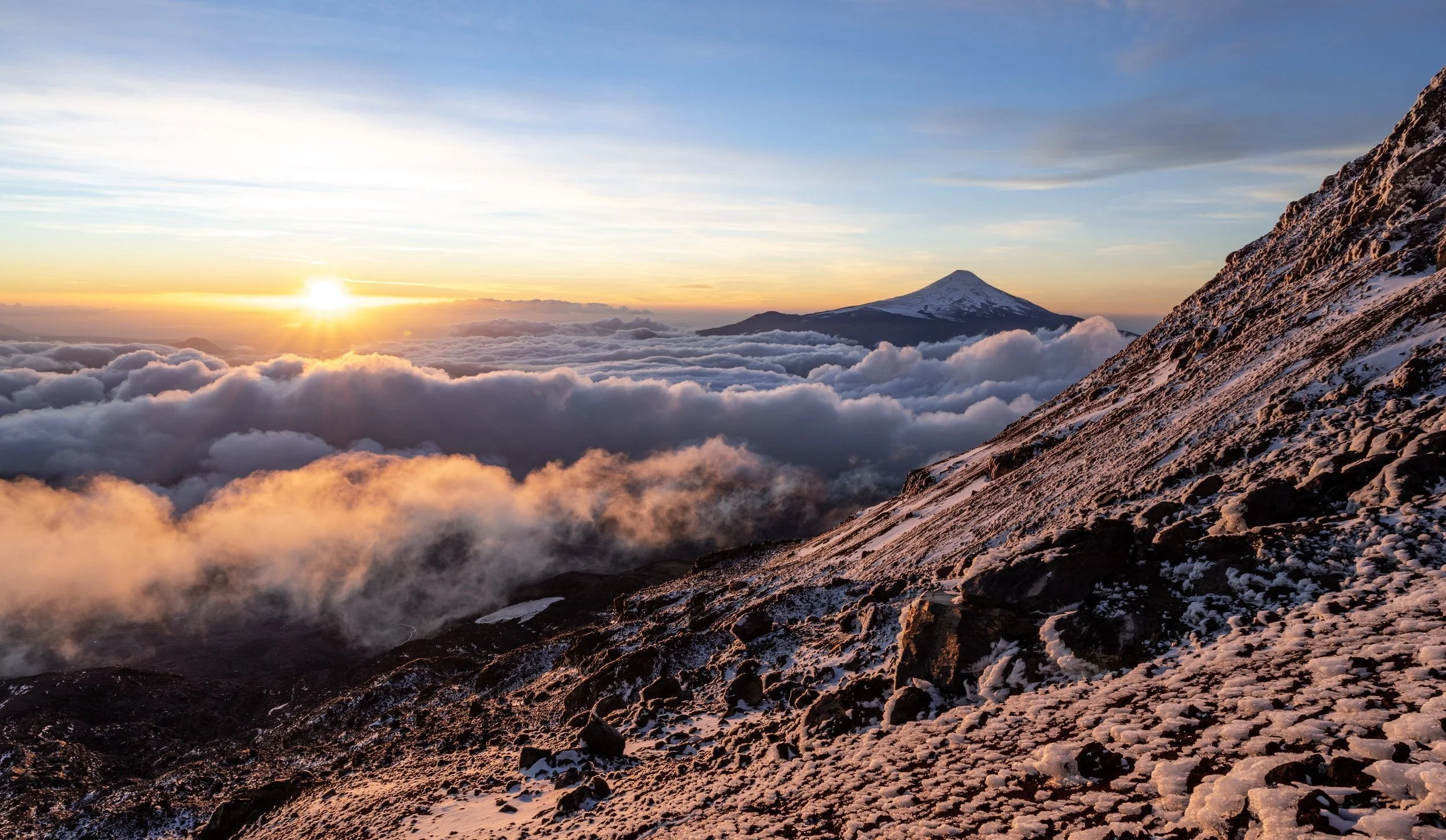THERE IS ALWAYS SUNSHINE AFTER RAIN
Standing on top of Volcán Quetrupillán at sunset, our smiles and expressions say it all—we were speechless.
I never travel without a small Slovenian flag. It helps me promote my country (since many people still confuse us with Slovakia or think we were part of the Soviet Union), reminds me of home, and, considering our small population of just 2 million, you never know—you might be the first Slovenian to reach the summit of a peak
The middle section of our trek was short, cold, wet, and incredibly windy, yet truly magical. Despite the relentless weather, Pacha Mama seemed to hear our prayers, allowing us to ascend two stunning volcanoes. We were rewarded with breathtaking views, wide smiles, and fulfilled hearts.
-
Rain. It felt like we had forgotten what it was—water pouring down, soaking every corner of our "waterproof" clothes and shoes. For the past month, we had been fortunate, with the sun always shining, drying our clothes, warming our frozen faces, and providing much-needed vitamin D. But now, the infamous Patagonian weather—an unpredictable mix of rain and fierce winds—had struck us hard before we had even fully entered the region.
Yet, hiking in these conditions, though challenging for some, is profoundly beautiful. When the sun finally breaks through and reveals the hidden landscapes, the experience can be awe-inspiring. As it was for us. We found ourselves shouting with pure happiness from the top of our lungs. After days of battling wind and tiny hailstones scratching our faces, the reward came in standing atop two magnificent volcanoes—Sollipulli and Quetrupillán, the latter offering one of the most magical sunsets of my life.
Last araucaria tree standing on the slopes of Volcán Sollipulli. The path from the CONAF (National Forest Corporation) station winds through a lush forest that gradually thins out as you ascend, leaving only araucarias to prevail up to about 1800 meters above sea leve.
Gusts of wind reaching up to 100 km/h buffeted us on top of Sollipulli, a stratovolcano with an immense 4 km-wide caldera filled with glacial ice, up to 650 meters deep. Unlike most calderas, this one did not collapse due to an explosion; the true reason for its formation remains unknown.
Laguna Azul with Volcán Quetrupillán shrouded in a veil of clouds in the upper right. Camping by this lake felt like déjà vu—we had made the same traverse (albeit in the opposite direction) before the pandemic in 2020, and my father celebrated his 60th birthday on the very spot where our tent is pitched once again.
Walking through the volcanic landscape of Villarrica National Park.
Until the landscape opened up completely around us, revealing a jaw-dropping sunset and 360° views of the surrounding volcanoes. In the distance was Villarrica, one of the most active, famous, and frequently climbed volcanoes in Chile.
Behind the caldera of Quetrupillán, on the Chilean-Argentinian border, stands the massive Volcán Lanín. At 3,776 meters above sea level, it is the highest volcano in the region.







